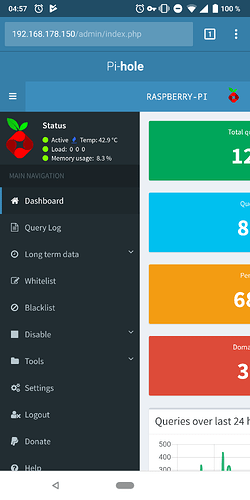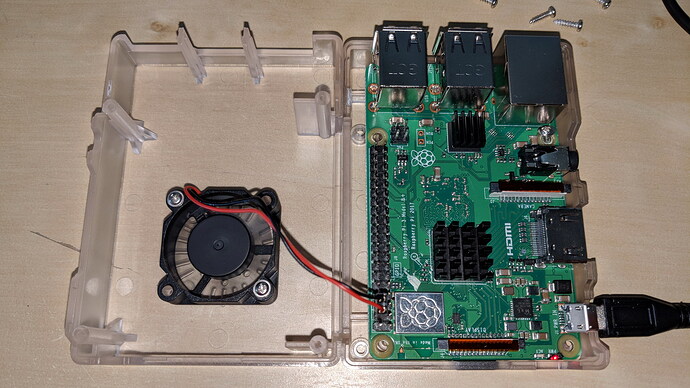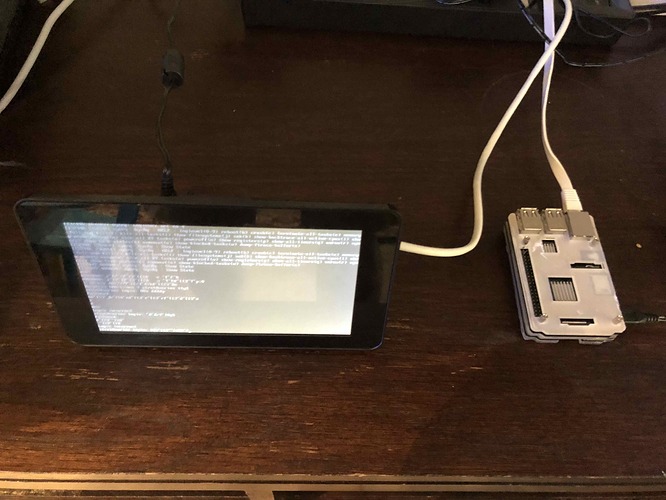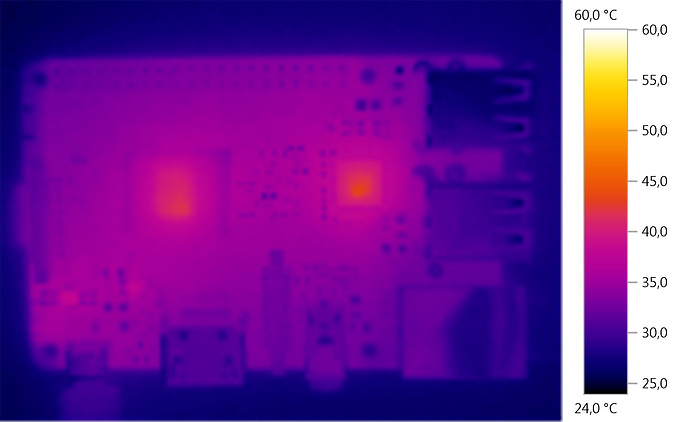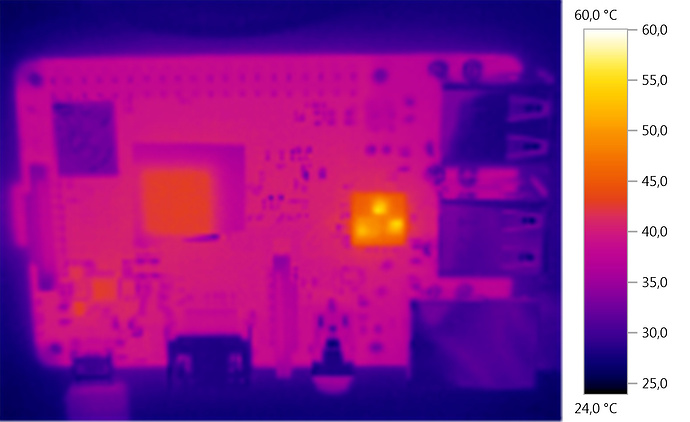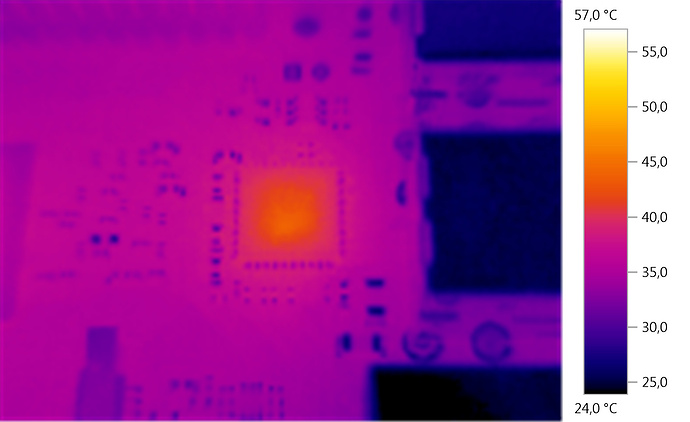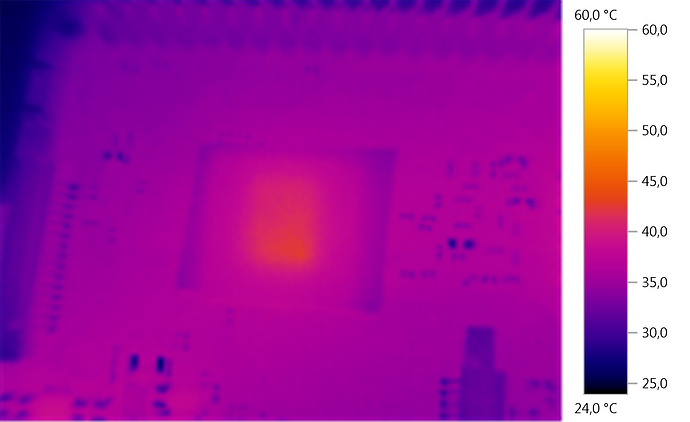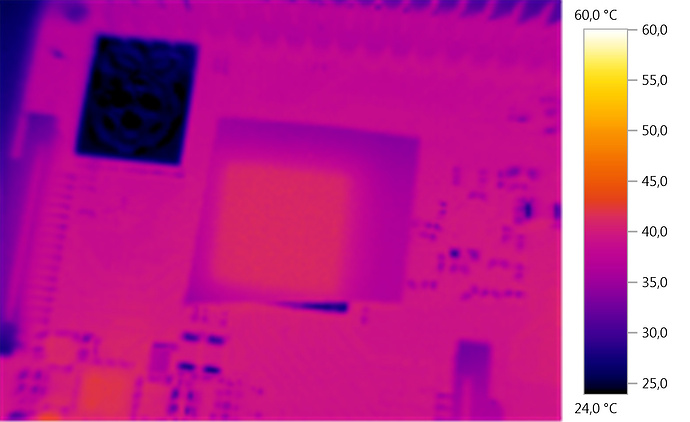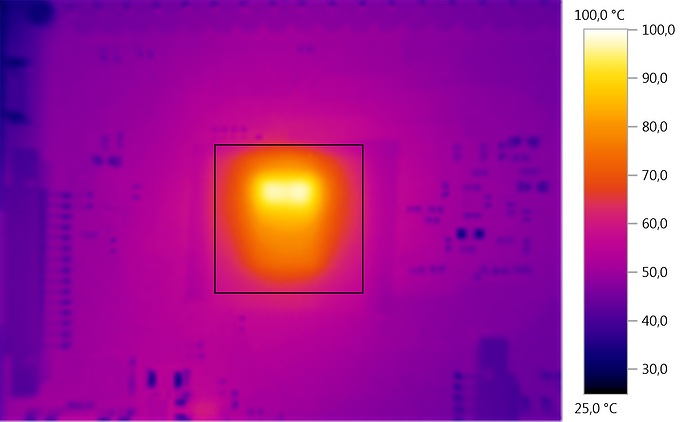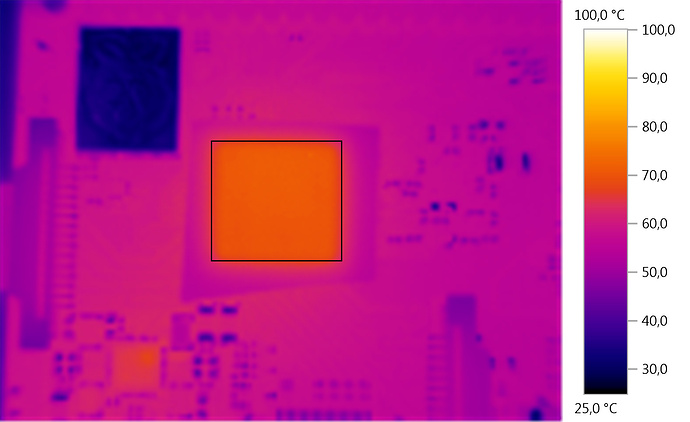A bit off the topic, but with the heatsink(s) on your 3B+, what is the temperature reported on your PiHole dashboard? I don't run heatsinks on mine, all it runs is PiHole and unbound, and it's usually at 125F (just a bit less than 53C). My 3B+ is in one of the AdaFruit plastic cases, closed on all sides.
Hey,
My pi2 is aprox. 45~46°
My pi3B+ is aprox. 55~57°
They are both in a original raspberry pi case, no heatsinks or fan.
My standby PiHole is on a Zero WH in an Adafruit plastic case. Without much DNS load on it (the load goes to the primary), its running 39 C.
What case is that with the fan? That's pretty nice.
I have 2 Pi-Holes, primary and secondary DNS for my home network of about 40+ devices.
They are running at 53 and 48 degrees celsius respectively.
@jfb I got it from AliExpress - was €2.99 including fan and shipping to Germany. Fan is very silent.
The Raspberry Pi 3 B+ is expected to have higher temperatures. If you pay close attention, you can see that the B+ even has an inbuilt heat-sink (although it may not look like one due to the missing cooling "fingers")
This metal plate is the most primitive form of a heat-sink and glued on top of the CPU (below is the RPi 3 B v2 CPU)
My 3B+ offers only a little bit of additional performance (few percents) but needs about 20% more electrical power. As this additional power consumption has to go somewhere (after all energy is conserved in closed systems ![]() ), the device gets much hotter and this is expected.
), the device gets much hotter and this is expected.
I stored my 3 B+ in the cabinet and happily use 3 B (not plus) for everything and am very satisfied.
On of the reasons I got a regular 3B instead of the plus.
@jfb , check if your patched as it might have influence:
pi@pi-hole:~ $ vcgencmd get_config int
sdram_freq=450
Yeah, I got it in one of the very first Pi-supply kits I ordered. After having had many issues with this hardware, we asked them to ship Pi 3B for now. (Warning: personal opinion following) I think the Pi 3B is a much better device and should be preferred in all cases. The additional power consumption of the B+ is not justified for the few percent of extra performance you get. Also, as the difference is really minimal, there is nothing that only the 3B+ could do.
Okay, since we do not want to speculate but only want to judge based on facts, I did some measurements. In order to make them fair, I did a few things:
- Updated both my Pi 3B and Pi 3B+ to the most up-to-date version of Raspbian (newest kernel, etc.) + rebooted
- Ensure that both only run Pi-hole and verified that they have about the same load
- Let them sit for two hours like this
- Made some thermo images I attach below
Both are connected to a Gigabit Ethernet switch and have WiFi/Bluetooth disabled. They use identical power supplies (5V/2.5A).
Raspberry Pi 3B:
Raspberry Pi 3B+:
Raspberry Pi 3B Ethernet chip:
Raspberry Pi 3B+ Ethernet chip:
Raspberry Pi 3B CPU:
Raspberry Pi 3B+ CPU:
Note: I put an opaque sticker on the CPUs to ensure that the temperature measurements can be compared (as the metal cover of the Pi 3B+ has a different reflectivity, this would have otherwise made the comparison quite difficult).
Interestingly the hottest points are, for both, always the Ethernet chips whereas the 3B+ chip got much hotter than the 3B chip (57.0°C vs. 44.0°C). Both CPUs hover at about the same surface temperature (~41°C).
They both report meaningful temperatures (3B 42°C, 3B+ 44°C) using /opt/vc/bin/vcgencmd measure_temp.
This test was under idle conditions and I may repeat them under load (with a suitable benchmark) at some point, but this makes me conclude that the Raspberry Pi foundation apparently managed to resolve the previously seen temperature issues with their recent patches.
I repeated the test under full load. Used benchmarking command was seven times
sysbench --test=cpu --cpu-max-prime=20000 --num-threads=4 run
Top is the Raspberry Pi 3B, bottom 3B+
Peak temperatures and reported temperature (vcgencmd measure_temp):
- 3B: 99.5°C (intern: 81.7°C +/- 1.0°C)
- 3B+: 72.5°C (intern: 70.9°C +/- 1.0°C)
The actual run time of the benchmark test (computing prime numbers on all four cores) was
- 3B: 15m35.045s +/- 5 seconds
- 3B+: 10m24.120s +/- 2 seconds
I ran the benchmarks three times to estimate the scatter in time. It is surprisingly small.
To make the comparison a bit more fair, I compute the average surface temperature of the opaque sticker on the CPUs:
Raspberry Pi B3: Averaged temperature in the rectangle: 71°C
Raspberry Pi B3+: Averaged temperature in the rectangle: 70°C
We see that both CPUs are about equally hot whereas the heat-sink clearly helps in spreading the heat across the entire available chip surface.
So where does the extra power the Raspberry Pi 3B+ consumes go to?
You may be able to guess it from the first picture (comparison of the two boards). I also computed the average surface temperatures for the entire boards and see that it's about 50°C for the Raspberry Pi 3 and about 55°C for the Raspberry Pi 3B+.
The PCB clearly helps radiating the heat.
After all, I think it's fair to say that the Pi 3B+ is - including all patches as of June 23, 2018 - a fair device:
- Yes, it runs hotter,
- Yes, it consumes more power, but also:
- Yes, it also gives a notable improvement in computational performance (at least for computing prime numbers).
This benchmark was for multi-core performance. Single-core performance tests show similar differences between the two board, whereas the maximum temperatures are much lower (65°C for Pi 3B, 55°C for Pi 3B+).
Note: Obviously you don't want to use a Raspberry Pi for computing primes as the same task is completed in about 30 seconds on a regular PC that is already five years old (Intel Xeon E3-1245 v3). Getting the same task completed about 20x slower at about 5 Watt power consumption makes the "dollars per computation" close to being identical between the two devices.
Here's the output for my 3B+. Does this indicate if it's patched? (I'm not familiar with the patches). I ran both "sudo apt update" and "sudo apt upgrade" a few days ago, so I should have the latest. Raspbian Stretch.
pi@Pi-3B:~ $ vcgencmd get_config int
aphy_params_current=819
arm_freq=1400
audio_pwm_mode=514
config_hdmi_boost=5
core_freq=400
desired_osc_freq=0x33e140
desired_osc_freq_boost=0x3c45b0
disable_commandline_tags=2
disable_l2cache=1
display_hdmi_rotate=-1
display_lcd_rotate=-1
dphy_params_current=547
force_eeprom_read=1
force_pwm_open=1
framebuffer_ignore_alpha=1
framebuffer_swap=1
gpu_freq=300
hdmi_force_cec_address=65535
hdmi_force_hotplug=1
hdmi_group=2
hdmi_mode=82
init_uart_clock=0x2dc6c00
lcd_framerate=60
over_voltage_avs=56250
over_voltage_avs_boost=0x27ac4
pause_burst_frames=1
program_serial_random=1
sdram_freq=450
Yes it looks like its patched.
They lowered sdram frequency from 500 to 450MHZ to patch a hardware design flaw.
I run at about 82F. I use an open ventilated case, heat sinks and Noctua Premium fan. Under load it never gets as higher than 107F.
About 2 weeks ago, I found out that my Raspberry Pi 3B+ was running at around 65C. I believe about 3 months ago I did a manual pihole upgrade, and then it was running at around 55C. I didn't check on my RPi until 2 weeks ago, so I don't know exactly when it began running at the higher temp.
My RPi 3B+ is running PiHole with DNSSEC and DoH using Cloudflared script. Also it had no fans, no heatsinks, cheap plastic case. But today I swapped out the case to an aliminium one that included a thermal pad and acts as a heatsink (Flirc Case). My RPi 3B+ has now been running for roughly 7 hours at 42~45C.
I use a Pi 3 B+ and run these applications on it:
- Pi-hole
- RaSpotify
- ShAirport
The Pi is equipped with these small coolers for ICs. I left the case open for a better heat dissipation. The temperature varies between 58°C and 65°C. Most of the time it is around 62°C. It's completely independent of the Pi's load. The 3 load numbers are mostly below 0.2, 0.1, 0.1.
Does someone have an idea wether this normal?
My 3B+ runs Pi-hole and a few other things and has similarly low load averages. The temperature hovers around 48 to 52 C. It's in a Pi-hole box and covered, no special cooling. There are other variables such as whether it's in a warm location. At 60 C the 3B+ starts to ramp down with its "soft limit" to keep things cool, you can read more here
@chrislph Thanks for your quick answer!
But that's all stuff that I know. Anyway, I have no idea what to do to get the heat lower. The surrounding temperature is at 23°C. I think I'll put the whole stuff on my Pi 4 to see what happens there.
Could you get one of these small GPIO mini fans? It wouldn't locate the cause of the slightly higher temps but should bring you back down to lower temps, having some forced airflow across the processors.
https://coolcomponents.co.uk/products/miniature-5v-cooling-fan-for-raspberry-pi-and-other-computers
